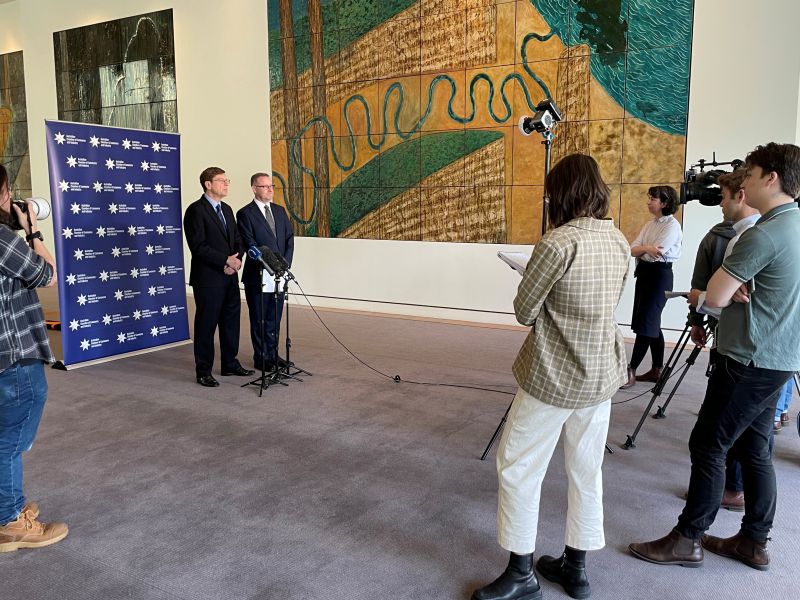Australia’s economy not out of the woods
19 Sep 2023
|Media Release

Australian manufacturing is facing challenges on multiple fronts, the latest ACCI-Westpac Industrial Trends Survey has found.
Westpac senior economist Andrew Hanlan said that manufacturers are facing the weakest demand conditions in a decade (outside of the pandemic shock in 2020), as well as deteriorating profitability. In that environment, manufacturers will be cautious in both their hiring and investment decisions.
“The Westpac-ACCI Actual Composite is holding at relatively low levels, moving sideways in the September quarter to be at 51.3, following a 51.1 outcome the previous period,” Mr Hanlan said.
“These readings, which are around the break-even mark of 50, indicate that conditions are approaching stalling speed. The survey reported flat new orders for a second quarter, declines in employment and overtime, and a modest rise in output aided by an easing of labour and material shortages.
“Outside of the pandemic shock of 2020, the Actual Composite for the half year is the weakest since 2014 and new orders for the half year are the weakest since 2013.
“The key message and the number one concern of manufacturers is the lack of any growth in new orders. Back-to-back flat new orders (with only a net 1 per cent reporting a rise for both June and September quarters) is consistent with the marked slowing of the Australian economy.
“The economic downturn is centred on consumer spending, which was flat in the June quarter as household disposable income contracted for a fifth consecutive quarter, squeezed by rising living costs, higher interest rates and additional tax obligations.
“The general business mood remains deeply pessimistic. A net 35 per cent of respondents expect the general business situation to worsen over the next six months, little changed from a net 32 per cent in the previous quarter. These results eclipse the pandemic lows and are the weakest since 2008/09, following the Global Financial Crisis.
“The Expected Composite rose to a still-subdued 54.3, up from 52.9 last quarter, but nine points below a year ago, and well below pre-COVID levels. Respondents anticipate a modest improvement in new orders, but a key uncertainty is whether these expectations prove to be too optimistic, as they were in June.
“Inflation pressures have eased the survey finds, which along with the soft demand backdrop, adds to the case for the RBA remaining on hold and suggest that official interest rates have likely peaked.
“On average unit costs, a net 37 per cent of manufacturers reported an increase in September. That is well down from 67 per cent in June and an end 2022 peak of 76 per cent, but still above the pre-pandemic average of 23 per cent. This mirrors the deceleration in goods inflation domestically and globally.
“Labour and material supply headwinds are easing. Notably, labour is not as ‘difficult to find’, at a net 4.1 per cent in the September quarter, sharply lower from a net 51.4 per cent in June, with rising labour supply now sufficient to meet additional labour demand.
“Manufacturers profitability is set to weaken further. A net 1 per cent expect profits to deteriorate in the year ahead, and while that is an improvement on June (when a net 10 per cent expected a deterioration) it is still a downbeat view in the face of ongoing margin squeeze and soft demand.”
ACCI chief executive officer Andrew McKellar said this survey shows Australia’s economy is not out of the woods.
“Manufacturers are starting to feel the strain of slowing orders and it is reflected in their hiring and investment intentions. Australia’s broader economic slowdown has begun to affect the manufacturing sector,” Mr McKellar said.
“Labour shortages that gripped the sector are no longer the central concern. Rather, it was a lack of new orders over the last six months that limited production.
“The survey shows that the pressure in the labour market is decreasing. There has been a sharp decline in the number of businesses struggling to find labour. Despite this, manufacturers are currently experiencing an increase in wages pressure, with more than a third expecting higher wage outcomes from their next enterprise bargaining agreement.
“Wages no longer appear to be linked to demand for labour and productivity.”
This was highlighted by the recent national accounts data that showed labour productivity continued to contract sharply in the year to June 2023 by 3.6 per cent.
“Input costs rose rapidly in the June quarter 2023 and, while easing, cost pressures remain high in September. In a slowing economy, business has had its pricing power restrained. More than a third of businesses experienced an increase in average unit costs over the three months to September, but less than a quarter were able to increase prices to offset these higher costs,” Mr McKellar said.
“Most businesses have been forced to absorb these increasing input costs, squeezing their margins.
‘While business investment in plant and equipment was solid in the first half of the year, investment intentions trended down abruptly in the September quarter.
“Profit expectations remain negative and speak to the challenging environment faced by manufacturers.
“The economy is walking a tightrope, and the government’s industrial relation changes are going to cast all balance aside. Changes to our workplace relations framework will result in businesses closing their doors and workers losing their jobs. Only the unions will benefit from changes to Australia’s industrial relations system.
“We need a constructive approach, focusing on common interests, businesses and employees striving together for innovation and increased productivity.
“Greater business investment is needed to lift productivity and drive economic activity. Lifting productivity has been identified as a key priority by the government – it must take decisive action to support Australia’s businesses immediately.”
Read the report here


